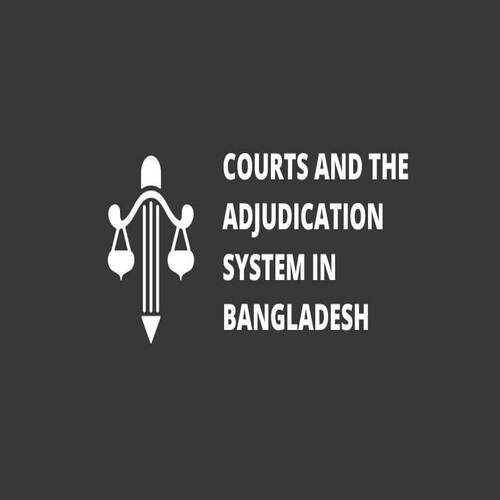The courts and adjudication system in Bangladesh play a vital role in upholding the rule of law and ensuring justice for its citizens. Here is an overview of the structure and functioning of the judiciary in Bangladesh.
- Supreme Court of Bangladesh: This is the highest judicial authority in the country. It comprises with two divisions:
- Appellate Division: Hears appeals from lower courts and has the authority to interpret the constitution.
- High Court Division: Deals with original and appellate cases of civil, criminal, and constitutional matters.
- Subordinate Courts: These include District Courts, Sessions Courts, Magistrate Courts, and other specialized tribunals. They handle cases at the district and lower levels.
Moreover, conducting a courtroom in Bangladesh, like in any country, requires adherence to legal procedures and protocols. Here is a general guide on how court proceedings are conducted in Bangladesh:
- Courtroom Setup: The courtroom typically consists of a judge’s bench, a witness stand, a podium for lawyers to address the court, seating for the accused, lawyers, witnesses, and the public.
- Opening: The judge enters the courtroom and everyone rises as a sign of respect. The court clerk calls the case, and the proceedings begin.
- Role of the Judge: The judge presides over the courtroom, ensuring that proceedings are conducted fairly and according to the law. The judge interprets the law, decides on the admissibility of evidence, and provides instructions to the jury if applicable.
- Presentation of Evidence: The prosecution presents its case first, followed by the defense. Witnesses are called to testify, and evidence is presented to support each side’s argument. In Bangladesh, the Evidence Act of 1872 governs the admissibility of evidence.
- Cross-Examination: After a witness is questioned by the side that called them, the opposing side has the opportunity to cross-examine the witness to challenge their testimony.
- Legal Arguments: Once evidence has been presented, lawyers for each side present their legal arguments to the judge. They interpret the law, apply it to the facts of the case, and attempt to persuade the judge or jury of their position.
- Closing Statements: Both sides have the opportunity to make closing statements summarizing their case and urging the judge or jury to rule in their favor.
- Verdict: In a bench trial (trial by judge), the judge renders a verdict based on the evidence and legal arguments presented. In a jury trial, the jury deliberates to reach a verdict, which is then announced in open court.
- Sentencing (if applicable): If the defendant is found guilty, the judge imposes a sentence. In criminal cases, the sentence may include imprisonment, fines, probation, or other penalties.
- Adjournment: After the verdict is announced or the case is otherwise resolved, the judge adjourns the court.
Throughout the proceedings, it is essential to maintain decorum and respect for the court. Participants should address the judge as “Your Honor” and follow courtroom etiquette. Additionally, legal proceedings in Bangladesh are conducted in Bengali, so interpreters may be used if necessary.

